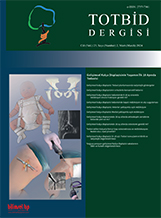
Developmental hip dysplasia (DDH) is a common and significant issue concerning the hip in children. Untreated cases can lead to permanent disabilities, while appropriate treatment methods can restore patients to normal functionality. Planning for DDH treatment is typically based on age and age-related factors. Before the walking age, the use of the Pavlik harness, as well as closed or medial open reduction, is often employed. In cases of children at walking age, anterior open reduction and capsulorrhaphy are generally utilized. For older children, pelvic osteotomies are preferred to enhance hip joint stability and prevent residual acetabular dysplasia. The indications for pelvic osteotomies in DDH treatment nowadays are mainly based on the studies of Pemberton and Salter. Salter osteotomy is a complete osteotomy and is indicated for patients over 18 months old. Pemberton osteotomy, on the other hand, is an incomplete osteotomy and is indicated for patients over 12 months old. However, Paul A. Pemberton has noted that performing the Pemberton osteotomy on patients over 18 months is technically easier. Dega osteotomy, defined as a pelvic osteotomy method used for DDH treatment in walking children, is also described. Pelvic osteotomies are frequently performed concurrently with open reduction to avoid residual acetabular dysplasia, starting from 18 months old. Indications for performing pelvic osteotomies under 18 months of age are limited. In these cases, the application of pelvic osteotomies becomes necessary when instability is observed during open reduction. However, it should be remembered that technical challenges can arise during pelvic osteotomy in young children, potentially complicating cases. In the literature, studies have been conducted where pelvic osteotomies were performed simultaneously with open reduction to prevent residual dysplasia in patients under 18 months old. Although successful outcomes of pelvic osteotomies in patients under 18 months have been reported, we can state that sufficient evidence regarding the necessity of pelvic osteotomy in patients under 18 months old has not yet been found.